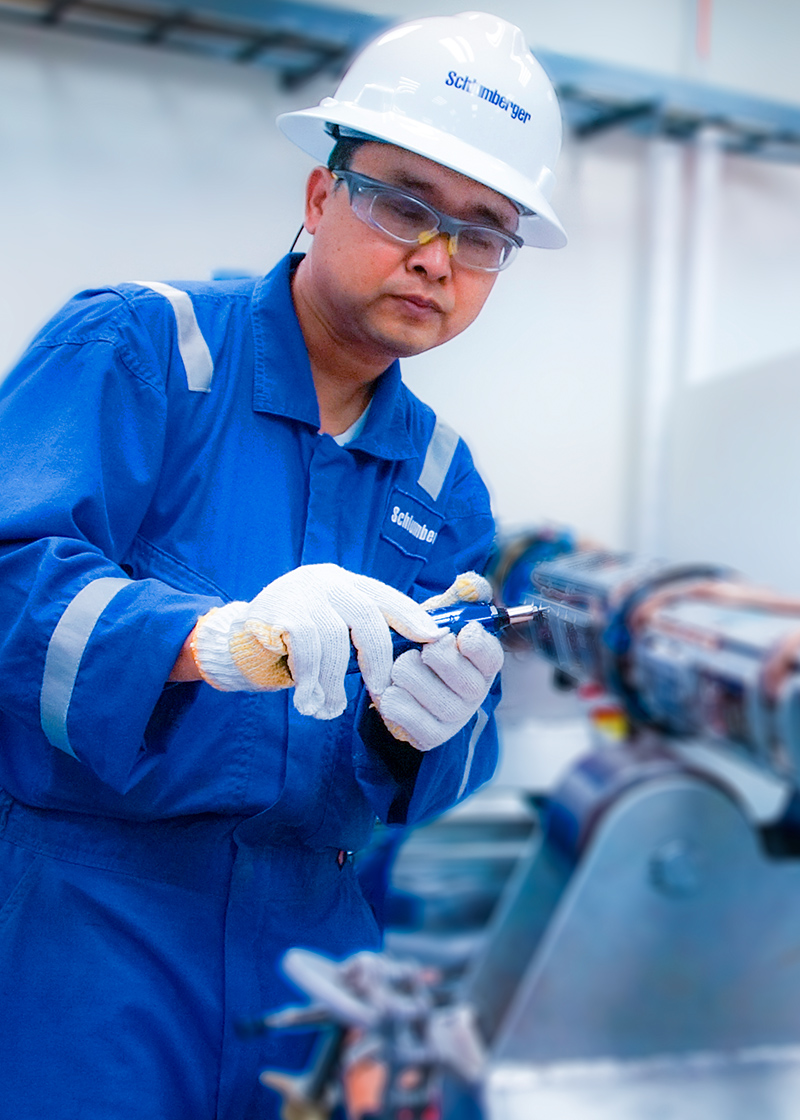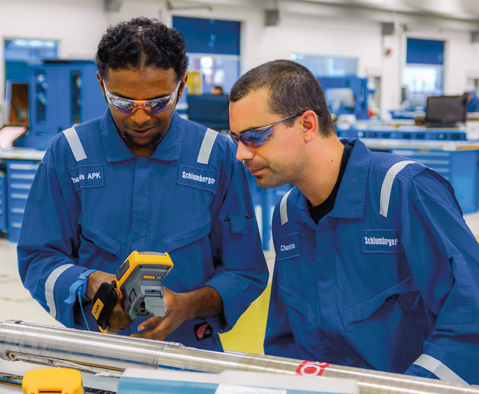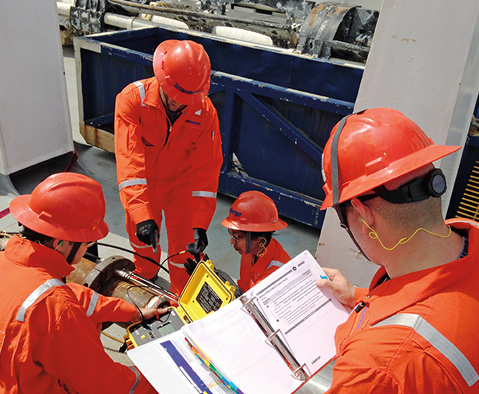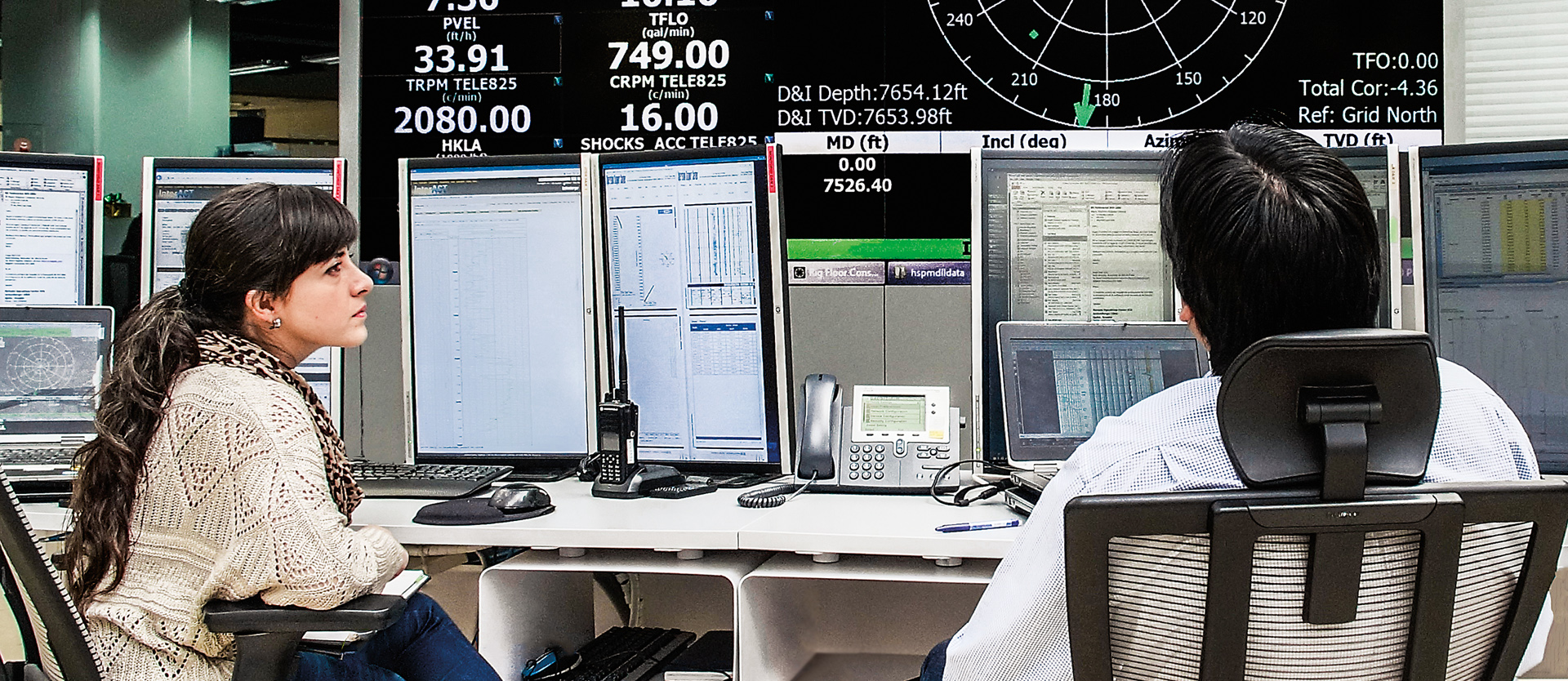Originally, two organizations oversaw the Schlumberger technology lifecycle—Engineering, Manufacturing, and Sustaining (EMS) and field operations. First, EMS would develop and manufacture new technology that it released to operations. Operations would deliver the services associated with the technology and also perform the necessary maintenance on field equipment. The Sustaining function was responsible for supporting the technology once it was released to the field. Because 80% to 85% of the total cost of ownership (TCO) of tools and equipment accumulates from the time they are deployed to the day they are retired, there is a significant upside to improving an asset’s management throughout its lifecycle.
Reliability Centered Maintenance improves asset reliability and manages the consequences of failure by predicting catastrophic failures in advance.

This is why we combined the maintenance and sustaining activities to create the Technology Lifecycle Management (TLM) organization, which acts as a bridge between Engineering and Manufacturing and field operations. The TLM organization establishes industry-leading maintenance processes and ensures that sustaining activities are aligned with the specific demands of operations that vary among GeoMarket regions.
The organization has a mandate to reduce the TCO of an asset from the time it arrives in the field to the moment it is retired. By improving asset management, TLM can provide the most reliable tools and equipment to operations in a timely manner and at the lowest cost. In addition, the organization provides critical feedback for the product development cycle to improve reliability, maintainability, and the total cost of ownership for the future generations of tools and equipment.
As TLM improves product reliability, the reduction of failures also reduces the nonproductive time rate (NPTr), which reflects the number of lost-time hours due to failures and is expressed as a ratio of the total hours worked. Reducing NPTr increases asset availability and subsequently reduces maintenance costs.
The TLM organization is complemented by regional Centers for Reliability and Efficiency that centralize assets and the maintenance and sustaining experts required to maintain them. These centers play a key role in ensuring service reliability by monitoring tools and equipment to prevent failures before they occur. The Centers for Reliability and Efficiency work in conjunction with a network of maintenance bases to perform timely, reliable, and efficient repairs and maintenance.
Taking a cue from the aviation industry, we have implemented Reliability Centered Maintenance for our tools and equipment. This is a multidisciplinary process for reliability that eliminates unnecessary maintenance and manages the consequences of failure. When jet aircraft were first introduced, their accident rate was high compared to today’s standards. After close study, the aviation industry discovered the three basic tenets of Reliability Centered Maintenance.
The first tenet is that unnecessary maintenance causes failures. Facts show that tools and equipment do not fail the way we think they do, and preventive maintenance works only for age-related failures. Second, managing the consequences of failures is important. The failure itself is not the problem, it is what happens after the failure occurs that is the problem. Finally, a company must take a multidisciplinary approach toward reliability. It starts with the design and continues in the operations and maintenance phases, but also requires highly skilled staff for each step along the way.
Reliability Centered Maintenance improves asset reliability and manages the consequences of failure by predicting catastrophic failures in advance. This knowledge also provides critical input into the need to build additional redundancy, or backup safety features, during the engineering phase. All of this enables Schlumberger to reduce nonproductive time.
One example of predicting failures is a proprietary mobile application Schlumberger created for monitoring our fracturing pumps within North America. We collect many variables from a hydraulic fracturing pump every second, and the mobile application analyzes them to alert field personnel when the pump’s reliability rating is approaching its operating limit and it should be replaced before a failure occurs. In fact, we collect vast amounts of data on all of our tools, so we continue to explore how this can help us predict failures.
Asset utilization also plays a key role in the technology management lifecycle. As the number of failures is reduced and repairs are completed in a timely manner, the total nonproductive time decreases. As maintenance time decreases, asset operating time increases and results in improved asset utilization.
In addition, by centralizing and investing in asset tracking systems that provide real-time data throughout the globe, we are able to use our assets more efficiently. This provides us with greater flexibility in moving equipment to accommodate changing activity levels and leads to additional revenue. At the same time, this translates to a decrease in capital expenditures without slowing delivery of new technologies to the market.
The cornerstone of our TLM organization is the competency of our world-class maintenance and sustaining personnel. Our competency management approach forges a higher degree of professionalism, accountability, and responsibility.

Our Centers for Reliability and Efficiency (CRE) improve the interaction between Engineering and Manufacturing and field operations. Acting as regional asset maintenance hubs, CREs provide an advanced level of maintenance and service for tools and equipment while low to medium levels of maintenance remain in field locations.
The first CRE opened in May 2015 in Port Klang, Malaysia, which is 60 kilometers away from Kuala Lumpur. This 200,000-ft2 facility is the result of a successful Wireline pilot program in 2013 and employs 100 highly skilled engineers and technicians. Presently, the Asia CRE distributes Wireline tools to 65 locations in 54 countries. In addition, the Asia CRE has expanded to include Testing Services and Completions tools and equipment.
During the pilot program, the Wireline product line sought to improve asset deployment. They began by identifying assets that generated the highest revenue and were complex to maintain, but had few or no restrictions on their movement across borders. Settling on the MDT* modular formation dynamics tester family of tools, they used the i-District* district resource and business process management application to identify field asset demand and plan the most cost-effective and timely logistics for asset distribution across Asia GeoMarket regions.
As a result, tools and people from six locations in two GeoMarket regions were centralized in Port Klang. With the Area product lines at the Asia CRE now responsible for tool ownership, this centralization has improved asset utilization. Wireline discovered that it could provide the same level of service with 70% of its asset fleet, which freed up the remaining 30% for deployment outside of the locations in which they originated. Our customers benefit from cost savings resulting from increased tool reliability and better service delivery.

Product-related failures account for a quarter of the reliability issues our customers face, and revitalizing the Engineering and Manufacturing organization has begun to address this. Product reliability for tools and equipment is quantified by the NPTr, which reflects the number of losttime hours due to failures and is expressed as a percentage of the total hours worked. From 2011 to 2014, Engineering and Manufacturing achieved an 80% reduction in product-related NPTr.
The next challenge on our transformation journey is to address the remaining three-quarters of our reliability issues, which are related to operational processes. The Operations Integrity organization enables field operations to provide the highest quality of service to our customers by focusing on best-in-class operational processes.
The three key drivers for the organization are standardizing work, promoting procedural adherence, and ensuring competency. Service delivery managers and their crews are provided with the tools, processes, and coaching to establish a high level of consistency for the services they provide. These crews have the training and experience required but also undergo independent assessment to validate their competence. The overall results are safer, more efficient and reliable operations that mitigate process risk.
Taking another cue from the aviation industry, we added checklists and emergency checklists to further improve operations reliability and efficiency. For example, flight deck checklists ensure that crew members properly configure the airplane for different stages of flight (taxi, takeoff, etc.). Checklists are visual or oral aids that help crew members overcome the limitations of short-term memory in order to perform action or verification items without referencing a manual. These checklists are kept as short as possible to minimize diversion of the crew’s attention while performing the checklists.
While the application of checklists is appropriate for specific types of procedures, they were not enough for our purposes. Schlumberger tools and equipment require a more physical interaction during operations and maintenance. This is why the Operations Integrity organization implemented Standard Work Instructions (SWI), which standardize work for maintenance and operations and break up lengthy manuals into logical groups of tasks (e.g., assembly, maintenance).
Every SWI provides clear and concise step-by-step instructions to complete a distinct task, and it also includes pertinent reference information, warnings, and cautions for safer, more reliable execution. For example, there are now 1,500 Do It Right Standard Work Instructions across all product lines.

In 2014, Schlumberger launched the enterprise-wide Do It Right initiative to improve the consistency of our process reliability performance by stressing the importance of following standard procedures. The initiative instills a do-it-right mindset in conjunction with the use of Standard Work Instructions (SWI) and checklists to improve process reliability in different operating environments.
A prime example of the initiative’s success comes from Mexico Marine, where Testing Services operates in a deepwater environment at very high activity levels. From 2011 to 2013, a steady increase in nonproductive time (NPT) and incidents affected operational performance.
Testing Services addressed operational reliability by first establishing service delivery procedures to support on-the-job design and execution of every service. These are now accessible via a web interface that can also measure procedural adherence and includes drillstem testing and tubing-conveyed perforating procedures.
Next, Testing Services developed SWI for specific tasks or workflows related to maintenance and wellsite operations. In addition, new checklists guide staff through critical points before, during, and after operations. For example, one checklist prevents a mechanical packer from being run in hole with the incorrect configuration, which can lead to catastrophic incidents.
The focus on procedural adherence starts at the prejob briefing with review of the relevant SWI and checklists by the field services manager. With an eye toward continuous improvement, the manager also gathers crew feedback about the SWI and checklists during the postjob debrief.
In 2014, Testing Services in Mexico Marine had the second highest operating time of all the deepwater GeoMarket regions. The result of their Do It Right mindset saw a 93% decrease in NPT from 170 hours in 2013 to 11 hours in 2014 due to the use of SWI and checklists.
There is no process reliability without the people who perform those processes. As we seek to improve the way in which we do things, tasks and responsibilities are reassigned and new ones are created. Upholding the Schlumberger value that our people thrive on the challenge to excel in any environment, equipping them to maintain a work-life balance is vital to their development and the company’s overall success. Thus, we’ve used multiskilling and the creation of facility support teams to increase workforce productivity. The support teams manage common tasks so field personnel can focus on their core activities at the wellsite.
Multiskilling is not merely retraining one person to do another person’s job, but rather ensuring that the most appropriate individual to take on new tasks has the skills to do so. The individuals undergo rigorous training and their competency is accredited by trained assessors. Multiskilling also involves streamlining consecutive workflows and optimizing human resources at the wellsite in order to achieve a number of benefits. These benefits include increased operational capacity, decreased personnel exposure to health and safety risks, and more flexibility to improve work-life balance. Furthermore, it creates a workforce that is more flexible and efficient in responding to customer needs and changes in market demands.
For example, offshore the Philippines, advanced Drilling & Measurements technologies optimized the drilling of a challenging deepwater well. To increase people productivity on the operation, an engineer was trained in both mud logging and measurement-while-drilling services to provide workforce flexibility. This combination of Drilling & Measurements technologies and multiskilling saved three days of rig time, or approximately $1.8 million, while also reducing the exposure to health and safety risks.
As the leading oilfield services provider with a broad technology portfolio, we realize that it is vital to map activity with resource requirements, and to adopt systems to track the visibility of goods to further optimize processes. Schlumberger is one of the first companies in the E&P services industry to adopt operational planning capabilities. While some companies have worked on pieces of it (supply chain and distribution), none has gone to the lengths that Schlumberger intends to by incorporating people, assets, and products across the end-to-end value chain.
Operational Planning optimizes the supply and demand of resources. This requires accurate tracking of where those resources are at any given moment in time, with solutions such as global traceability using barcodes, RFID tags, GPS, and geofencing. Beginning with Drilling & Measurements, we have increased the visibility of resources and used an activity-based approach to forecast their demand. This ensures that we are driving our activity and resource needs based on a single plan that is agreed upon between the supply functions (considering lead time and cost) in order to meet the opportunities from each business unit.

When we talk about changing how we do something, the way to execute the change involves information technology. Our transformation is founded on establishing processes that are more efficient and have better visibility so that we are equipped to continually improve how we do our work. As such, IT is the engine that will make it possible for us to achieve process visibility and implement an integrated solution called Enterprise Resource Planning. Enterprise Resource Planning refers to the collection of software that we use to collect, manage, store, and interpret data from a variety of business activities.
The business world began to centralize IT systems approximately 25 years ago, and many companies approached this by first updating discrete functions, such as finance and supply chain, and then integrating them into a renewed IT landscape. Schlumberger is taking a different approach by creating a more integrated solution in line with our business requirements. In addition, we are building a system that is flexible as IT evolves, and currently includes the use of cloud computing, analytics, and mobile technology.
As Schlumberger takes its first steps along a similar path, the new IT systems that support the company will be deployed by 2020 and handle 95% of the expected transaction volume. In the shorter term, North America’s IT transformation is expected to be fully operational by 2017. We are taking a multistage approach because we do not want to create any disruptions in the business.
Aside from aligning our processes with the transformation, user experience is also an important consideration. Capturing accurate information not only gives us visibility but enables us to conduct the analytics we need to make informed decisions. Information technology captures this information, but also grants us the mobility and automation our transformation requires to achieve a level of success that spans the enterprise.